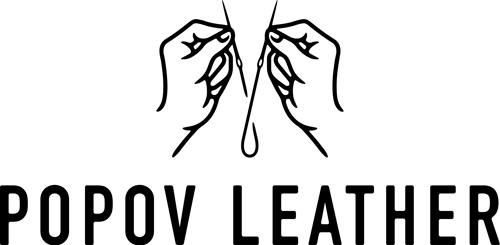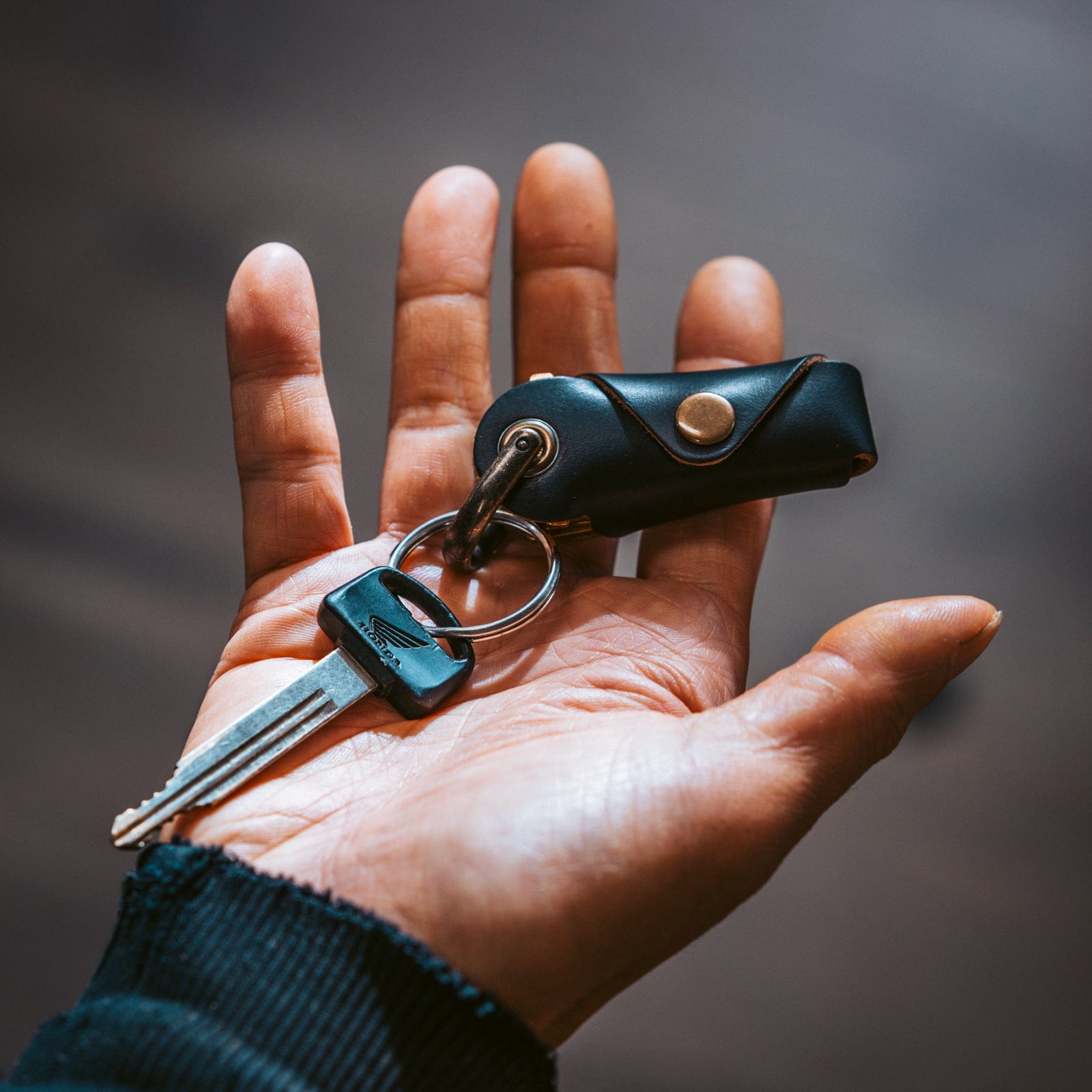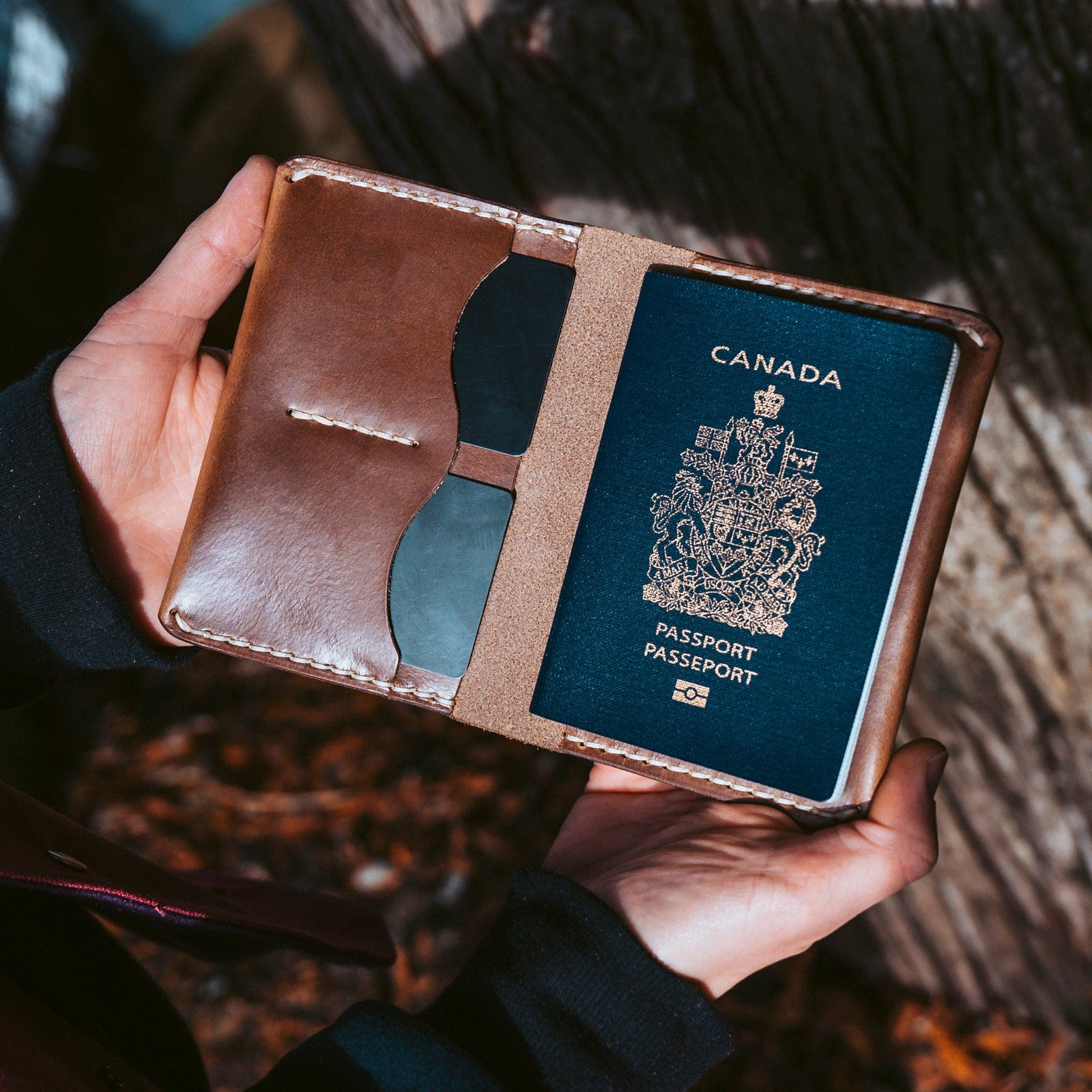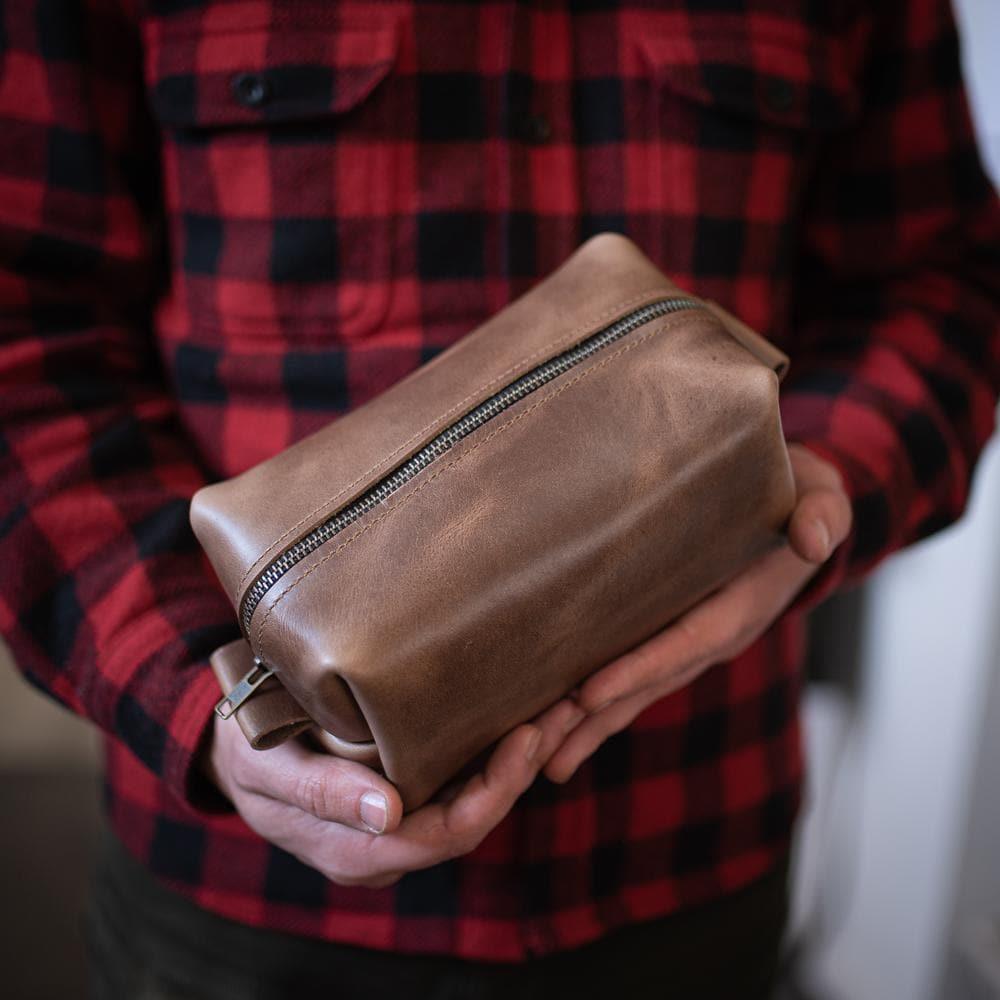Navigating the world of leather can be complex. However, our leather quality chart simplifies it for you.
Is “Genuine” leather genuine? What’s the difference between Top and Full Grain leather? Before you buy your next wallet or couch, let’s dispel some common myths and dive into what these leather grades mean.
There’s a lot of information and a lot of misinformation about the various types of leather.
Even with my six years of professional experience working with leather and making thousands of wallets, I found the research confusing.
Many websites have conflicting information which makes this process difficult.
My hope is that consumers who take the time to inform themselves with this leather quality chart can make better purchasing decisions.
Table of Contents
It Starts with a Cowhide
All cowhides (also called rawhide) range in thickness between 6 and 10mm. This thickness isn’t usable for much - especially not wallets or book covers.
However, manufacturers split it into usable sections.
Here's an example of how they pass a cowhide through a splitter to create top and bottom cuts.
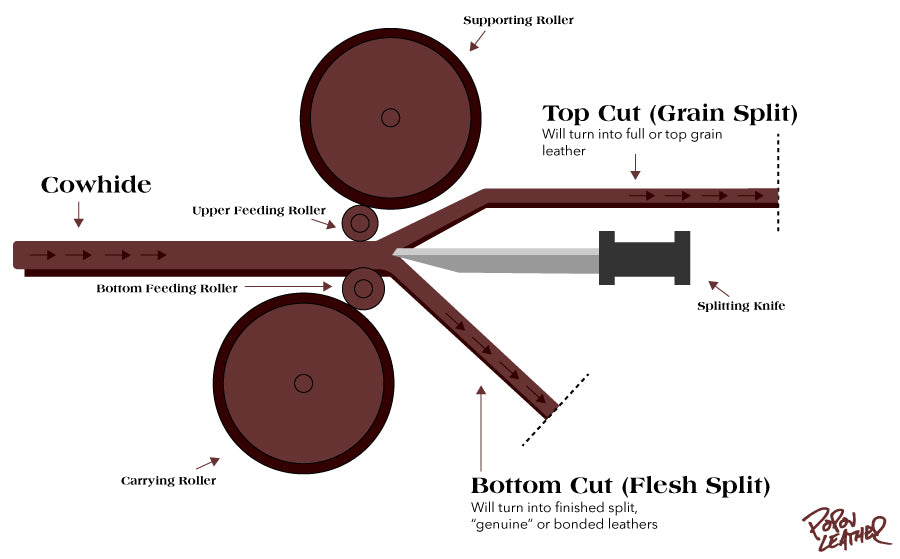
When we order our leather from Seidel, we specify the thickness that we want. The leather thickness we use for most of our goods is between 1.2 and 1.6mm.
Before tanning and processing, the tannery takes each cowhide and “splits” it. To achieve the final leather weight, hides must be split in the wet stage.
If you don't split and shave the leather, the weights (thickness) would be uneven throughout the full side of the processed leather and the chemicals, dyes, and/or waxes would not penetrate into the leather properly during the retan/color/fat liquoring stage.
They take the hide and shear off the top cut for us. This portion contains the full grain of the hide and that's what we make our products out of.
I'll discuss the bottom cut used for lower grades of leather later below.
Understanding the Leather Quality Chart: Different Grades Explained
There is no official standard for grading leather. Most tanneries use their own proprietary systems of grading based on cosmetic imperfections - not quality.
For example, Wickett & Craig use the following leather quality chart: standard, utility, and special to describe the number of blemishes and marks on their hides.
However, we can classify leather into 3 common categories based on how we finish a hide and which section of the cowhide we use.
Manufacturers and retailers alike use these leather categories interchangeably throughout the industry.
The leather grades are as follows (listed in order of quality):
-
Top Grain Leather, which includes:
- Full Grain Leather
- Corrected Grain Leather
- Split Grain Leather (sometimes called "Genuine Leather")
- Bonded Leather
Let's examine this cross-section of a cowhide. It shows where each leather grade originates when someone splits the cowhide.
This diagram notably lacks Bonded Leather - an abhorrent concoction of leather slurry I will cover later.

Top Grain Leather - Simple is Best
"Top grain can be either a full-grain leather or corrected grain leather."
Full Grain Leather
In simplest terms, if you’re looking for heirloom quality leather grades you want to start with top-grain leather which includes Full Grain and Corrected Grain leather.
Full Grain Leather at a Glance
Common Uses:
Customers seeking a higher-end experience opt for goods and products manufactured from full-grain leather. People truly want to put their own mark on the product through patina and everyday use.
Characteristics of Full Grain Leather:
- Marbling or fat wrinkles that look like shaded bands
- Variations in the grain and coloring
- Scars and “imperfections”
- Pigments and dyes will often be in varying shades across the leather
- You can see hair follicles in some leather.
What is Full Grain Leather?
Full-grain is a side of leather with the complete grain intact. In almost all cases, only the hair has been removed from the surface.
This leather can include natural markings such as scarring, blemishes, insect bites, branding, and stretch marks. People consider these markings as the signature of fine leather goods.
A common misconception is that these types of markings are “defects.” Instead, think of these as proof of natural origin. These markings incorporate the life of the animal. The absence of natural markings often means that the leather is of lesser quality.
Another one of full grain leather’s top features is that it breathes.
The leather will absorb moisture and oils from handling it over time. And this leather will patina beautifully.
Full-grain leather is also very durable.
Since the grain is fully intact, its fibers contribute to its strength. It’s not uncommon for a leather wallet to outlast the threads used to stitch it together!
Types of Full Grain Leather
Horween Derby or Dublin Leathers
Tumbling this beautiful leather produces rich character and textures within the grain. It features a subtle pull-up and ages wonderfully.
Vegetable Tan Leather ( Tooling Leather)
You’ve probably seen this type of leather. It’s notoriously hard to work with because it doesn’t have a protective finish. It patinas beautifully often turning dark brown after a short period. It absorbs everything in its environment.
Corrected Grain Leather - Good as full grain?
Next on my leather quality chart is Corrected Grain leather.
Corrected Grain is a contentious issue with leather workers and fans of leather goods alike because many people consider this to be inferior to full grain. The truth is, Corrected Grain and Full Grain both come from the same part of the cowhide.
Top Grain Leather at a Glance
Common Uses:
Accessories, upholstery, and footwear categories commonly use Nubuck, especially for boots and higher-end work gloves. Manufacturers frequently use smooth corrected grains for formal footwear.
Characteristics of Top Grain Leathers:
- Sanding and pigmentation diminish marbling and fat wrinkles
- Grain and coloring variations disappear
- Scars and “imperfections” are sometimes sanded away
- Often uniform in color, no variation or depth of color (some exceptions for example Chromexcel has wonderful pull-up effects)
- Leather is resistant to stains/spills
- Less breathability
- Somewhat waxy feel
What is Corrected Grain Leather?
People can confuse the "top grain" and "full-grain" leather grades as different splits of leather, but top grain can be either a full-grain leather or corrected grain leather.
It simply means that this leather is from the top cut of the hide when it is split. This is the same section where full-grain is split.
How does Corrected Grain leather different from Full Grain leather?
In a nutshell, tanneries will remove “imperfections” or add varying degrees of corrections to achieve a desired look or functionality.
Many big manufacturers (especially in apparel and footwear) cannot have cosmetic variances in their products – therefore they choose top grain leathers for quality, but also to have a consistent appearance in their leather goods.
Two examples are Horween's Snuffed Suede leather and Chromexcel.
They heavily correct Snuffed Suede leather to create a Nu-Buk effect (heavy tracking), while they “correct” Chromexcel, through a process resembling a burnishing operation.
This allows Horween to hand-stain the leather. The burnishing operation on Chromexcel prepares the leather for finishing by opening up the grain and allowing the stains to penetrate the leather.
The corrective process seals the pores of the leather. This means the leather can be easier to clean and doesn’t absorb as many oils and moisture. It also means that patina can take a longer time to develop and there’s less breathability compared to full grain.
Some folks consider corrected grain less durable than full grain because of the sanding during the correcting process. It's a weak argument, and in my experience, I haven’t found any durability issues with corrected grain.
Types of Corrected Grain Leather
Seidel Double-Shot Leather
Double-shot is a tanning process from Seidel Leather. A combination tanned leather that is hot-stuffed (with premium stuffing greases) and features an aniline finish.
A corrected grain leather with dramatic pull-up and soft waxy feel. Even though you can pigment these with color, they will still develop a dramatic patina over time.
Smooth Corrected Grain
Manufacturers often use these types of top-grain leather for formal shoes and can buff them to achieve an eerie and glass-like appearance.
Embossed Corrected Grain
A plating press typically stamps an imitation print over the top using high heat and pressure. After sanding away some top grains, they print a leather grain texture on top.
Other types of embossing include pebble, hair cell and synthetic.
If you’ve seen alligator or snake leather, it’s usually top grain leather with an embossed print.
Nubuck
People sand and buff these top-grain leathers to a matte finish. They feel fuzzy– like suede - but not as “hairy.”
These leathers hide scratches well and are less prone to cracking when repeatedly exposed to the elements. A lot of shoe and boot manufacturers favor Nubuck for its durability and appearance.
Split Grain Leather - the Leather Leftovers

The next category of leather goods in our leather quality chart is split-grain leather. This is where it's common to see durability and quality issues.
Split Grain Leather at a Glance
Common Uses:
Big box stores make almost all leather goods from finished split leather (aka genuine leather). Check for the stamp that says so.
Characteristics of Split Grain Leather:
- Sanding and pigmentation diminish marbling or fat wrinkles
- Pigments and dyes will often be a uniform color,
- No variation or depth of color
- Leather is resistant to stains/spills
- Zero breathability
- Plastic feel
- Not durable
What is Split Grain Leather?
Do you know the part of the leather they shave or split off at the bottom? They call that split grain.
It's the fibrous part that remains giving it a nappy appearance and doesn’t contain any of the hide’s grain.
Split grains are the leftovers.
Split grain leather doesn’t have any of the hide’s natural markings and products made from this material won’t stand the test of time.
Manufacturers often coat finished split leather with polymer and emboss it to resemble natural leather. Afterward, they stamp the words “Genuine Leather” to fool you into thinking it's good quality.
Types of Split Leather
Genuine Leather (also called Bicast)
Marketers often refer to Finished split leather as “Genuine” leather as a strategy to deceive customers. When you see the word “Genuine” you think of quality and the “real deal.”
Unfortunately, this is total garbage.
Manufacturers bond several layers of split leather together with a thin polyurethane or vinyl layer to give it strength and a uniform appearance. The end consumer usually doesn't see the backing.
Manufacturers heavily process these off-cuts, which are the least breathable and will never develop a patina. Unless you count surface-cracking and falling-apart patina.
And the feel is almost always like plastic.
And the smell?
Do you ever walk into a crappy shoe store and smell that distinct fake leather scent? That tells you you’re surrounded by genuine leather.
Suede
Suede is well known for its signature texture feel and “nappy” look. Often made from lamb, goat, deer, or calfskins. Suede is less durable, thin, and absorbs liquid very easily.
Bonded Leather - Scraps and Slurry

Welcome to the last stop on our tour of the leather quality chart. The absolute rock-bottom of the leather grades.
Bonded Leather at a Glance
Common Uses:
Cheaply made bags, office supplies, books, and upholstery on furniture.
Characteristics of Bonded Leather:
- Made from a combination of PVC, fiber content, and as little as 20% leather
- Grain and appearance will be uniform since it’s artificially embossed and spray painted
- Will not breath
- Feels like plastic
- Smells artificial
- Will never patina
- Will de-laminate and fall apart in a short time
What is Bonded Leather?
This is simply the lowest leather grade available. It’s the hot dog of leathers. Essentially leather dust is mixed with vinyl and turned into a sheet.
Manufacturers mulch shreds of the leftover leather scrap and mix them into a pulp slurry. Then, they spread it on a fiber cloth or paper backing using polyurethane adhesive.
Afterward, this finished sheet is spray-painted and/or embossed with a print.
Some countries that produce bonded leather, make it using as little as 20% actual leather fibers.
People consider bonded leather more environmentally friendly because it recycles leather bits that would otherwise go to waste.
However, consider the number of low-quality belts and wallets people discard due to poor quality.
Comparing Leather Grades: A Wood Analogy
Full Grain Leather
If you compare full-grain leather to a type of wood, it would be a walnut table with a live edge.
People prize this slab of wood for its living edge which shows the story of its originating tree.
Each table stands unique, retaining many “imperfections”.

Corrected Grain Leather
If you compare corrected grain leather to a type of wood, it resembles a solid, durable, mass-produced oak dining room table. Well-constructed and consistent.
You can lightly correct or heavily sand, buff, and varnish wood that is well-suited for commercial purposes.

Split Grain Leather
If split-grain leather was compared to a type of wood, it would be similar to composite or engineered wood.
This isn't a true piece of wood; manufacturers build it from multiple layers of thin wood that they wouldn't use otherwise. While quality can vary widely, engineered wood isn't as durable as solid wood. It can chip or de-laminate.

Bonded Leather
If bonded leather was compared to a type of wood, it would be cheap particle board.
Particle board is not real wood but made up of wood chips and sawdust. Bonded Leather is not real leather.

Using the Leather Quality Chart: Which Leather is right for you?
If you were paying attention, there are two leather grades on the leather quality chart that are undoubtedly the best quality: Full and Corrected grain.
They are sheared from the same durable grain and will patina over time. Imperfections and personality that come from full-grain is a personal preference, but I would have it no other way.
I love celebrating the personality that comes from each cowhide and the dramatic patina that every customer makes using their Popov Leather goods.
Do you have a story about your experiences with genuine or bonded leather? Did you ever buy a full-grain item that developed an incredible character? Share below! 👇
Written by Ryan Popoff
Ryan Popoff is the creative mind behind Popov Leather wallets, iPhone cases, belts, watch bands and journals since 2013. With a Bachelor Degree in Fine Arts, my leatherworking journey began at home. I wanted to create a simple leather wallet that could fit into my front pocket and — to my delight — it was a hit with family and friends. Hopefully you love our honest, quality leather goods too! Reach out with questions.
